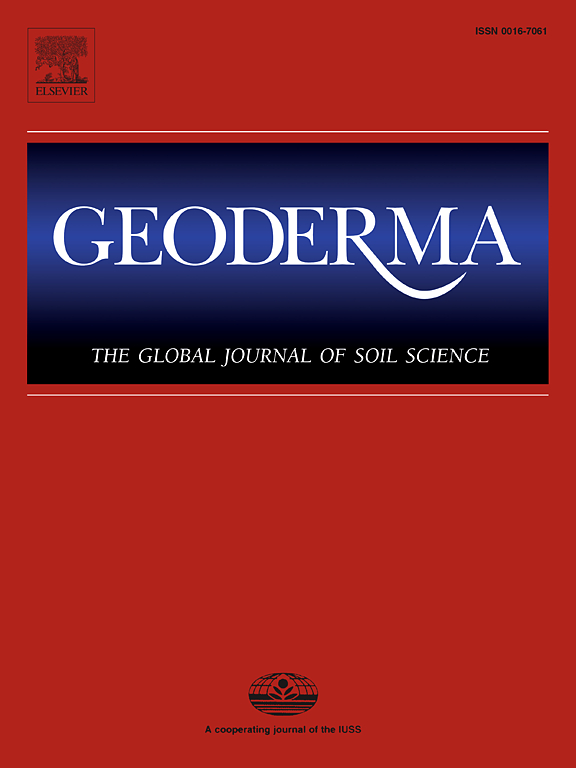Quantitative evaluation of carbon dioxide emissions from the subsoils of volcanic and non-volcanic ash soils in temperate forest ecosystems
IF 5.6
1区 农林科学
Q1 SOIL SCIENCE
引用次数: 0
Abstract
Subsoils (typically below a depth of 30 cm) contain more than half of global soil carbon (C) as soil organic C (SOC). However, the extent to which subsoil SOC contributes to the global C cycle and the factors that control it are unclear because quantitative evaluation of carbon dioxide (CO2) emission from subsoils through direct observations is limited. This study aimed to quantify CO2 emission from subsoils and determine factors that control CO2 emission, focusing on the decomposability of soil organic matter (SOM) and the characteristics of the mineral–SOM association in soils. Therefore, a laboratory incubation experiment was conducted using surface soils (0–10 cm and 10–25 cm depth) and subsoils (30–45 cm and 45–60 cm depth) collected from four Japanese forest sites with two different soil types (volcanic ash and non-volcanic ash soils). The CO2 emission from the subsoils was found to be responsible for 6 %–23 % of total CO2 emission from the upper 60-cm mineral soil across all sites. Radiocarbon signatures of CO2 released from the subsoils indicated the decomposition of decades-old SOM in the subsoils. The correlations between CO2 emission rate and soil factors across both soil types suggested that the CO2 emission from the subsoils is mainly controlled by the amounts of SOC easily available to soil microbes and microbial biomass C, not by the amounts of reactive minerals. Given the potential active participation of subsoils in terrestrial C cycling, most of the current soil C models that ignore subsoil C cycling are likely to underestimate the response of soil C to future climate change. The quantitative and mechanistic understanding of C cycling through a huge subsoil C pool is critical to accurately evaluating the role of soil C in the global C balance.
求助全文
约1分钟内获得全文
求助全文
来源期刊

Geoderma
农林科学-土壤科学
CiteScore
11.80
自引率
6.60%
发文量
597
审稿时长
58 days
期刊介绍:
Geoderma - the global journal of soil science - welcomes authors, readers and soil research from all parts of the world, encourages worldwide soil studies, and embraces all aspects of soil science and its associated pedagogy. The journal particularly welcomes interdisciplinary work focusing on dynamic soil processes and functions across space and time.
 求助内容:
求助内容: 应助结果提醒方式:
应助结果提醒方式:


